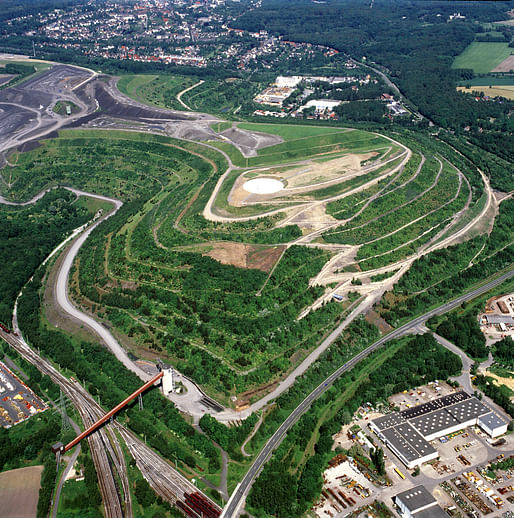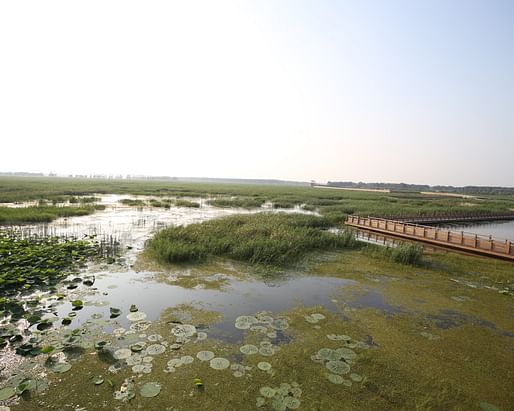

In the face of increasingly destructive climate collapse, the University of Pennsylvania's McHarg Center for Urban Ecology is launching Design with Nature Now, a sprawling survey of some of the most inventive ecologically-driven landscape infrastructure projects from around the globe.
The exhibition comes as the recently-launched McHarg Center takes shape and begins to tap into the growing national and international conversation regarding the proposed Green New Deal.
Some of the projects highlighted in the exhibition are well-known, others, less so. Divided into five discrete categories, the collected projects present a vision for how humans can use the principles of ecological urbanism to meet their own needs while also staying out of nature's way.
Some projects, like BIG's Big U plan for Battery Park in New York City, aim to retrofit existing urban ecologies for the coming era of sea level rise.
Others, like the Yellowstone to Yukon Conservation Initiative, seek to create continuous habitat corridors for wildlife, an increasingly pressing concern as habitat destruction and changing climate conditions force wildlife species to leave their native habitats.
The featured projects include international efforts, as well, like the Emscher Landscape Park in Germany, where several worker towns modeled after Ebenezer Howard's "Garden City" model have been converted into a massive green corridor that spans 20 municipalities and 177 square miles of rehabilitated landscape.

The AECOM-designed Weishan Wetland Park in Jining, China is another example. Here, landscape designers have created a 15-square-mile park that will purify urban runoff as it remediates one of the country's most polluted freshwater lakes.
A speculative project for Medellín, Colombia aims to tie new urban design initiatives to the area's rich geology, hydrology, and ecology networks.
The exhibition is currently on view through September 15th.
No Comments
Block this user
Are you sure you want to block this user and hide all related comments throughout the site?
Archinect
This is your first comment on Archinect. Your comment will be visible once approved.